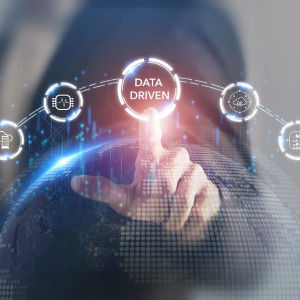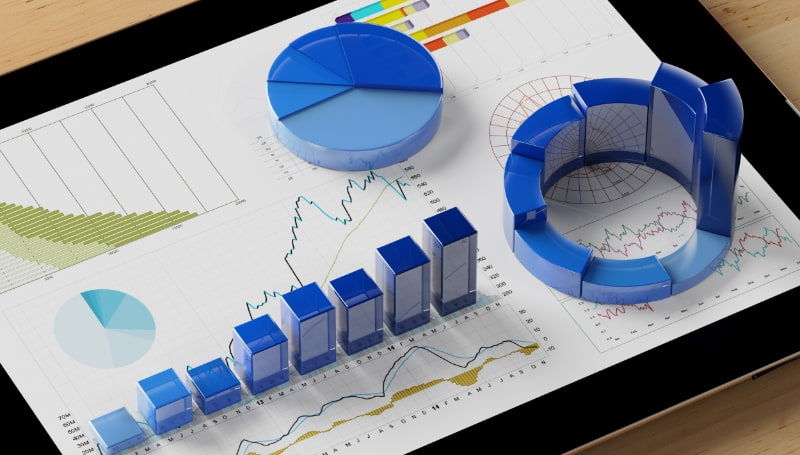Introduction
We are living in the age of information, where data is the new oila valuable resource driving modern business decisions. In the realm of marketing data is more than numbers.Data Driven Marketing and Information. it is insight direction and opportunity. Data driven marketing leverages analytics to understand customers predict behavior optimize campaigns and maximize return on investment ROI.
This article explores how businesses in 2025 can harness the power of data analytics to fuel successful marketing strategies create personalized experiences and outperform competitors.
Data Driven Marketing

Data-driven marketing refers to strategies built around customer information and analytics. Instead of relying on intuition marketers use insights derived from data to:
- Understand their target audience
- Craft precise messaging
- Choose optimal channels
- Improve conversion rates
Key Data Sources Include
- Website traffic and behavior analytics
- Social media engagement metrics
- CRM data Customer Relationship Management
- Email campaign performance
- Purchase and transaction history
- Third party demographic psychographic data
Data Driven Marketing Matters in 2025

Hyper Personalization
Consumers expect personalized experiences. According to Salesforce 84 of customers say being treated like a person not a number is critical to winning their business.
Improved ROI
Marketing budgets are tight. Data helps companies allocate resources wisely to high performing channels and audiences.
Competitive Advantage
Brands that adapt quickly based on real time data can outperform slower less agile competitors.
Customer Retention
By analyzing customer behavior marketers can anticipate churn and proactively address pain points.
Key Metrics in Data Driven Marketing
Understanding what to track is essential. Here are the key marketing metrics data driven organizations focus on
| Metric | Purpose |
| Customer Acquisition Cost CAC | Measures cost to acquire a new customer |
| Customer Lifetime Value CLTV | Predicts total revenue from a customer |
| Conversion Rate | Measures success of campaigns |
| Click-Through Rate CTR | Measures effectiveness of ads emails |
| Bounce Rate | Indicates website content relevance |
| Engagement Rate | Tracks likes shares comments on social media |
| Retention Rate | Tracks how long customers stay |
| Net Promoter Score NPS | Measures customer satisfaction and loyalty |
The Data Driven Marketing Process
Define Objectives
Set clear goals lead generation brand awareness customer retention etc.
Collect Data
Gather data from:
- Google Analytics
- Social media platforms (Meta X TikTok LinkedIn)
- Email marketing platforms (Mailchimp HubSpot)
- CRMs (Salesforce Zoho)
- Heatmaps (Hotjar Crazy Egg)
Segment Audiences
Divide customers based on:
- Demographics
- Behavior
- Interests
- Purchase history
- Funnel stage
Analyze and Interpret
Use tools like
- Google Looker Studio
- Tableau
- Power BI
- HubSpot Analytics
- Adobe Analytics
Act on Insights
Make decisions
- Which ads to scale
- Which audience to target
- Which content format is most effective
Test and Optimize
Implement A B testing multivariate testing and monitor real time performance to iterate quickly.
Popular Tools for Data Driven Marketing
| Tool | Functionality |
| Google Analytics 4 | Website traffic & behavior |
| HubSpot | CRM email and campaign analytics |
| SEMrush | SEO PPC and keyword tracking |
| Hootsuite Analytics | Social media data and reporting |
| Klaviyo | Email performance segmentation |
| Hotjar | Heatmaps behavior tracking |
| Mixpanel | Product analytics and user journey mapping |
| Looker Studio | Custom dashboards from multiple data sources |
Personalization through Analytics
Behavior-Based Personalization
- Recommend products based on browsing purchase history
- Send cart abandonment reminders
- Tailor email content based on past interactions
Geo Targeting
- Show location-specific offers or content
- Use local language and time-based campaigns
Predictive Analytics
Use AI to forecast future actions
- Likelihood of purchasing
- Time to churn
- Interest in a specific product category
Real Time Marketing with Data
Marketers can now adjust campaigns in real-time using live dashboards and event-driven automation.
Use Cases
- Adjust ad spend during high-performing hours
- Send dynamic pricing updates based on demand
- Launch flash sales triggered by traffic spikes
Example Spotify Wrapped is a data-driven campaign that uses individual user data to drive mass engagement and sharing.
Challenges in Data Driven Marketing
Data Privacy and Compliance
With regulations like GDPR and CCPA marketers must
- Obtain user consent
- Use data ethically
- Ensure transparency
Data Silos
Unintegrated platforms can cause fragmented insights. Businesses need unified systems for cross channel understanding.
Overreliance on Data
Blindly following numbers without context or creativity can backfire. Human intuition still matters.
Data Quality Issues
Poor or outdated data leads to
- Wrong targeting
- Missed opportunities
- Lower ROI
Omnichannel Analytics
A customer may
- See an Instagram ad
- Visit the website
- Sign up for a newsletter
- Receive an SMS offer
- Make a purchase via mobile app
Tracking the full customer journey across touchpoints gives marketers the insight to
- Understand attribution
- Optimize the funnel
- Create consistent experiences
Attribution Models like first-touch last touch and multi touch help allocate credit properly.
Case Studies
Amazon
Uses past purchase data and predictive analytics to suggest products with uncanny accuracy, leading to 35% of revenue from recommendations.
Netflix
Uses viewing history and AI to personalize thumbnails and recommend shows improving watch time and retention.
Coca Cola
Used AI-powered analytics to launch a successful personalized Coke bottle campaign with names on bottles increasing sales and brand engagement.
Airbnb
Analyzes user behavior to optimize listings pricing and booking flow ensuring higher conversions and user satisfaction.
Future Trends in Data Driven Marketing
AI-Powered Decision Making
Machine learning models will make real-time recommendations automate segmentation and improve predictive targeting.
Voice & Visual Search Optimization
Search data from smart speakers and image recognition tools will become important in personalization and targeting.
Zero-Party Data Collection
Encouraging customers to voluntarily provide data via quizzes preferences and surveys will replace third party cookie reliance.
Automated Content Creation
AI will use data inputs to auto generate personalized copy product descriptions and ad creatives at scale.
Integrating AI and Automation
AI Uses in Data Driven Marketing
- Predictive scoring for leads
- Dynamic pricing
- Intelligent segmentation
- Sentiment analysis
- Chatbots trained on user data
Marketing Automation Tools
- ActiveCampaign
- Marketo
- Mailchimp
- HubSpot
These platforms use data to automate:
- Welcome emails
- Follow-up sequences
- Abandoned cart reminders
- Personalized landing pages
Data Ethics and Responsible Marketing
Data-driven does not mean intrusive. Trust is a competitive advantage in 2025.
Best Practices
- Be transparent about data usage
- Let users control what collected
- Use anonymized aggregated data where possible
- Prioritize security and encryption
Respect leads to loyalty Misuse leads to PR disasters.
Building a Data-Driven Culture
Marketing teams must collaborate with
- IT for data infrastructure
- Sales for lead feedback
- Customer service for satisfaction insights
Steps to Build the Culture
Train staff on data literacy
Set KPIs and benchmarks
Use dashboards for transparency
Celebrate data informed wins
Make data everyone’s responsibility not just the analysts.
Conclusion
In 2025 data is the backbone of marketing success. Those who collect the right data interpret it effectively and act strategically will lead their industries.
Data-driven marketing is not just about tools or dashboards its about understanding your customer deeply and intelligently crafting experiences they value and making informed decisions that drive real business growth.
Whether you are a small startup or a multinational brand embracing analytics in your marketing approach is no longer optional its essential.

